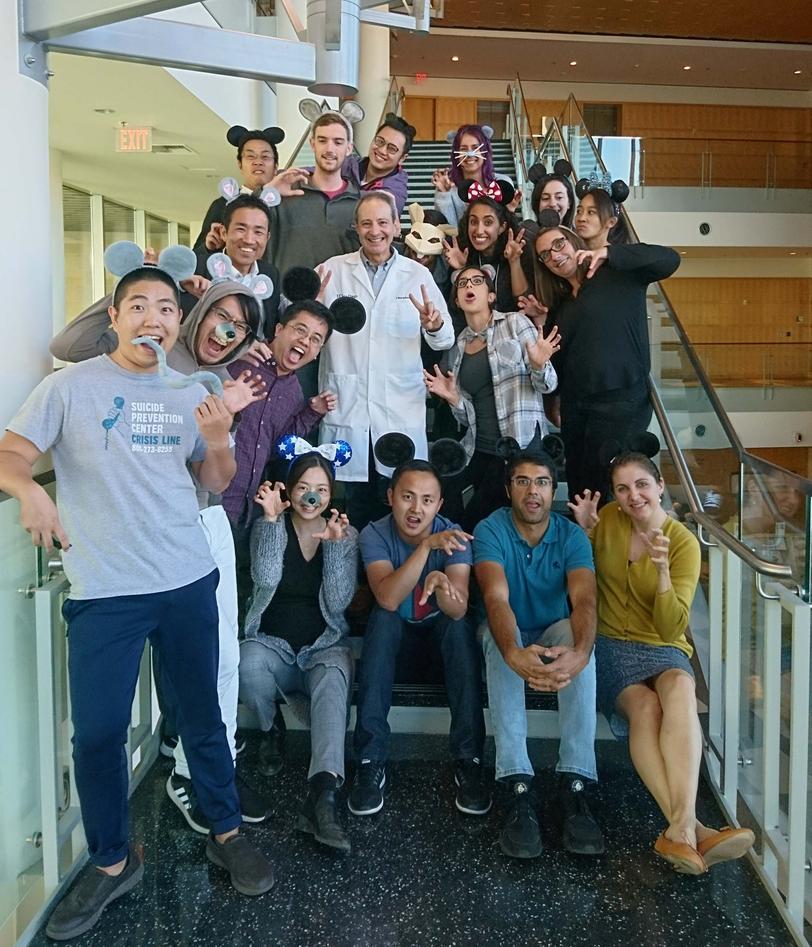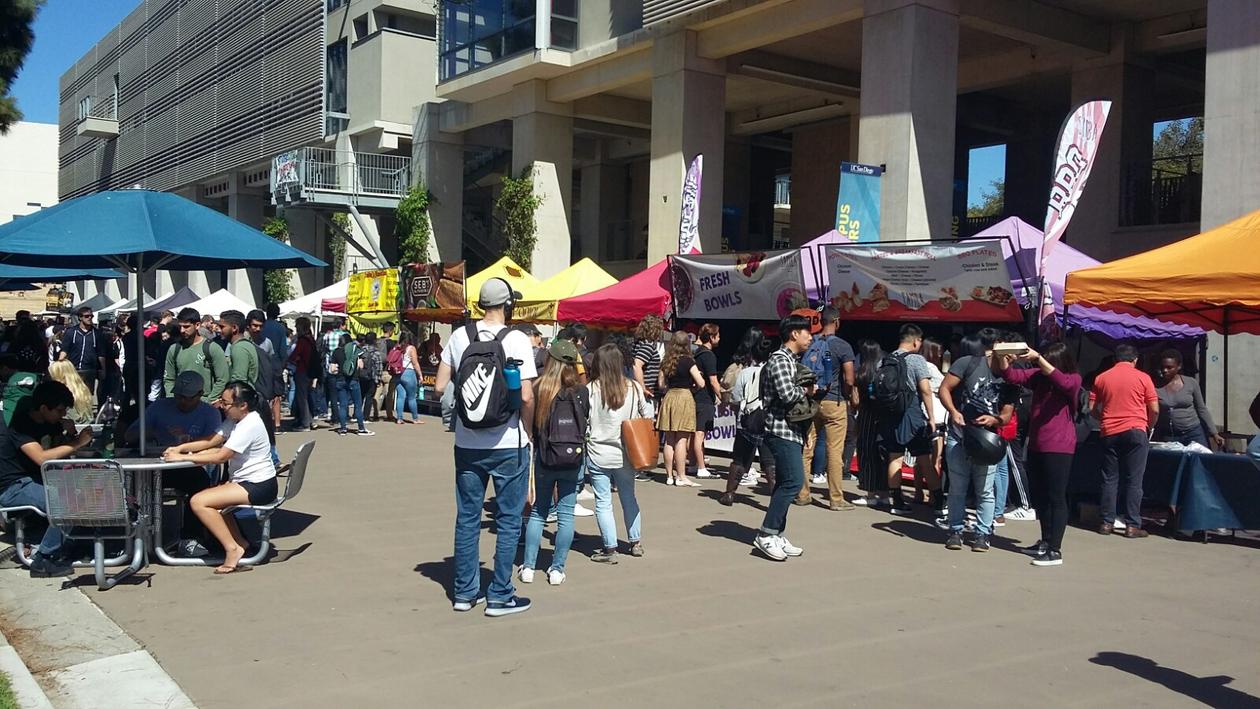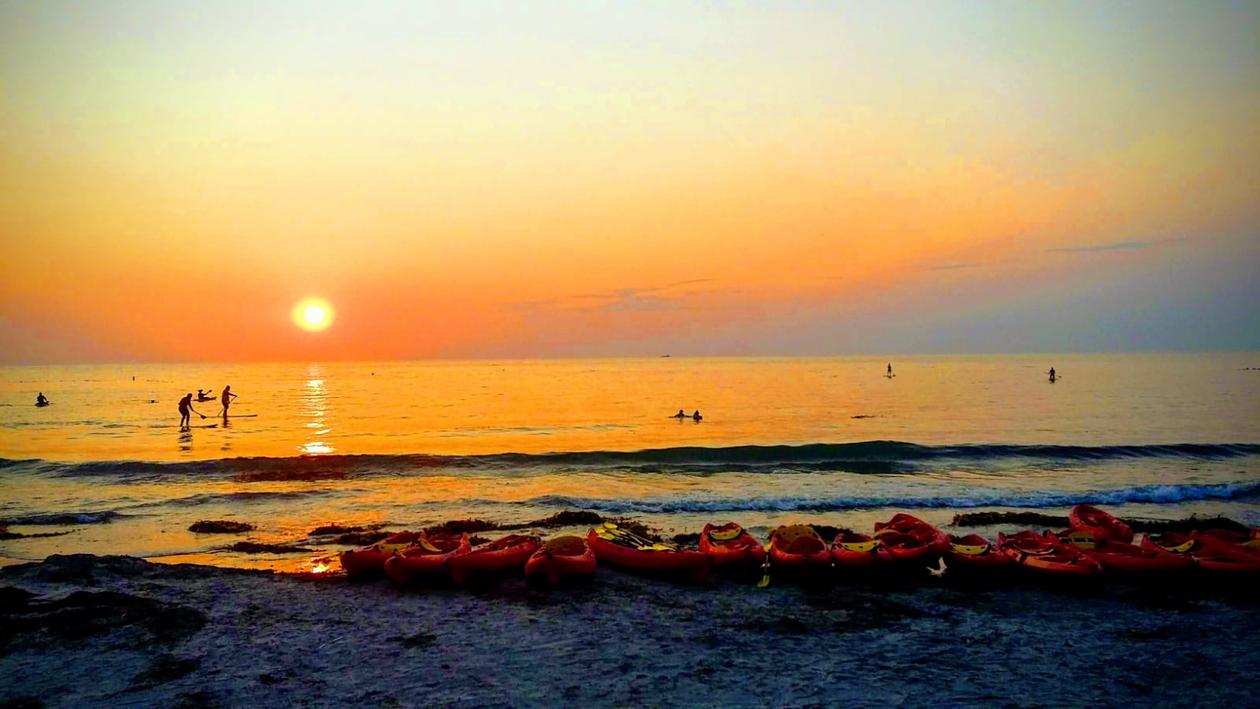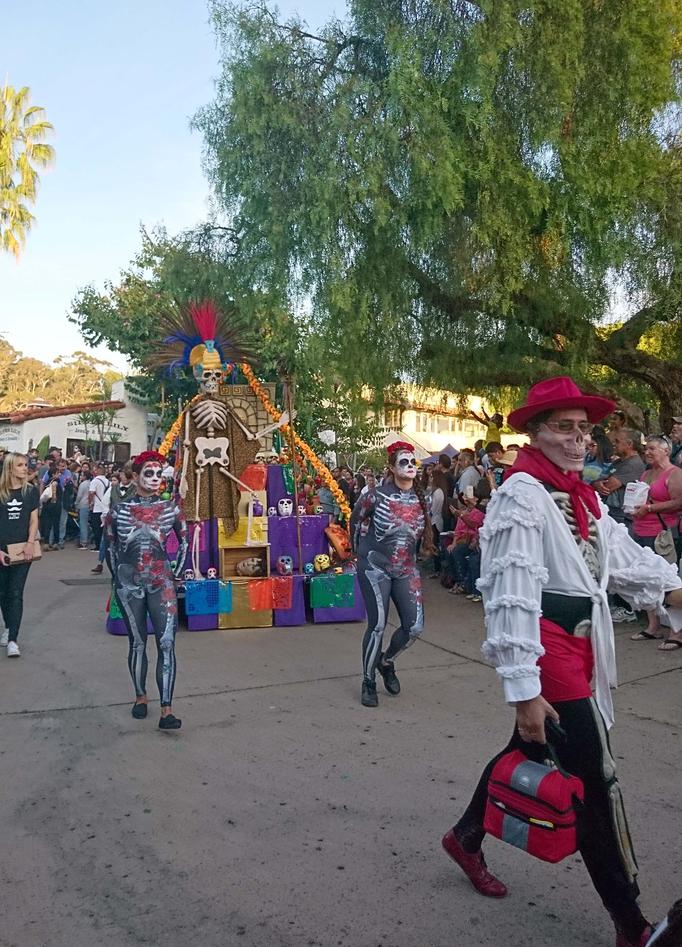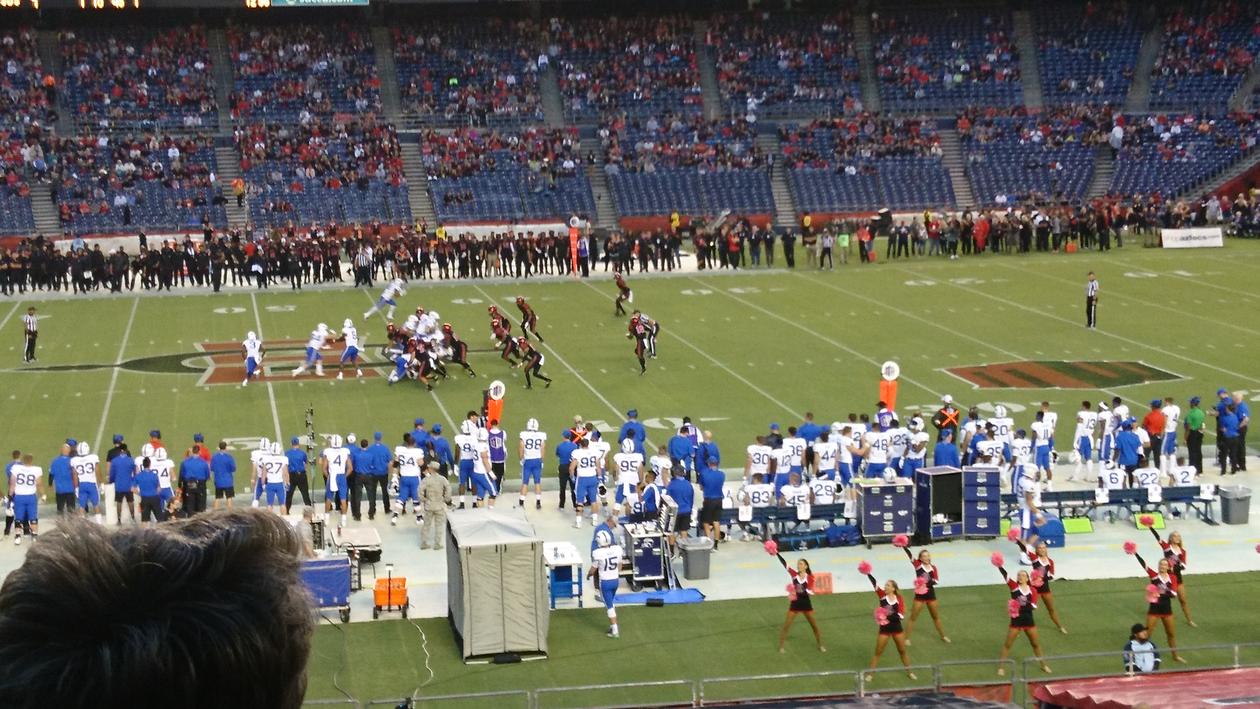Reflections from sabbatical at Moores Cancer Center, University of California, San Diego
CCBIO Associate Investigator Dana Costea is currently on a sabbatical at Moores Cancer Center at the University of California, San Diego, and reports of a great learning experience on cell signaling and molecular techniques, collaboration strategies and leadership styles, the center’s exemplary way of collecting tissue samples from patients for research, amazing new colleagues, living in San Diego and the American school system, among other.

Hovedinnhold
Choosing a place
I decided 3 years ago that I wanted to go to an institution abroad for my sabbatical, and started planning. However, it was not an easy choice to make even if I had my criteria set – to visit a prominent research group with a related, yet different research profile than mine. I wanted new viewpoints, to learn new techniques, and expand my research perspective. I visited 3 laboratories that seemed suitable to my requests, one at Harvard University, another one at the Institute of Technology in Brisbane and then Moores Cancer Center at the University of California, San Diego. The choice fell on the latter, with no hesitation. I came to San Diego to attend a conference in head and neck cancer in April 2017 and ended up in the laboratory of Professor Silvio J. Gutkind, vividly discussing the biological aspects and reasons for clinical failures of the treatment of head and neck cancer. I was fascinated by the enthusiasm of the researchers in Silvio’s lab, as well as the fact that whatever molecule you would name, Silvio would be able to tell you the possible pathways the named molecule was part of, as well as its interaction partners that might be responsible for biological responses of stimulating that molecule.
The Moores Cancer Center is designated by the National Cancer Institute as one of the few Comprehensive Cancer Centers in the United States. The center buzzes of intense clinical and research activity, with more than 150 ongoing clinical trials.
In 2015, the center recruited a new leadership team of excellent clinicians and researchers, most of them with the same research field of interest as mine, within head and neck cancer: Director, Professor Scott Lippman, Director for Basic Research, Professor Silvio Gutkind, Director of Translational Research, Professor Ezra Cohen, and Director for the Head and Neck Cancer Program, Professor Joe Califano.
The host research group and my research project
I am working in the research group of Silvio Gutkind. As part of a multidisciplinary team, his research group is investigating the effectiveness and mechanism of action of PI3K/mTOR inhibitors for oral cancer prevention and treatment, both as single agents and as part of novel co-targeting strategies. He is also co-leading a new precision prevention medicine trial in oral premalignancy with Professor Scott Lippman. Together with the group of Professor Joe Califano, well known for the establishment of the step-wise genetic progression model in head and neck cancer, Silvio’s group is also heavily involved in network-based molecular analysis of head and neck tumors. The aim is to exploit the emerging information on dysregulated signaling circuits and individual genomic and molecular alterations to identify new mechanism-based precision therapies to prevent and treat cancer. And together with Professor Ezra Cohen, a leader in immunotherapy in head and neck cancer, Silvio's group is now developing new combination therapies targeting cancer-driving mechanisms and reactivating the anti-tumor immune response.
Their research is complementary to my research on tumor-stroma interactions and with the recent acknowledgement of the essential role of tumor microenvironment for progression and response to treatment in head and neck cancer, my research focus and expertise on epithelial-mesenchymal interactions is as attractive to them as their research is to me. Independent of my findings, they have also identified several key molecules that serve as microenvironmental cues for cancer cell behavior. I am working on a project on the role of connective tissue growth factor in cancer and its connections with the Hippo and mTOR pathways, as well as its interactions with TGFβ and EGFR signaling pathways. I have to say that sometimes the questions on the relevance of drug assays performed only on cancer cells alone, without the influence of the tumor microenvironment, are quite challenging, but neither me nor the people here are afraid of debates and good discussions!
I learn so much every day, not only about cell signaling and molecular techniques, but also about collaboration strategies and leadership styles. Silvio has a very interesting and stimulating leadership style. Despite of the fact that he travels a lot and almost each week has to attend at least one meeting in a different city in the US, he is very present, both physically in the lab and online. Each Monday two students are presenting their projects in depth, and the science and concepts are meticulously questioned. Each Friday there is a standing group meeting where everybody is presenting their own projects, where the more technical sides of the projects are discussed for shared expertise and help with emerging roadblocks. The way he composed his research group is also special, more than half of his people being in senior, postdoctoral and researcher positions, with only few and yet highly talented PhD students, bringing the group's research to a very high level.
A well organized and certified Biorepository and Tissue Technology Center
On a side note, there is also something else that has attracted my attention: the greatly organized way of collecting tissue samples from patients for research coordinated and administered by the Biorepository and Tissue Technology Center. This is a shared resource facility at the Moores Cancer Center lead by Consultant Pathologist and Researcher Dr. Alfredo Molinolo. It is a comprehensive biobank that provides high quality, well-characterized, cancer-related human tissue specimens, and biological materials to UC San Diego members and Cancer Center Council collaborators.
It has an impressive collection of blood components and solid tissue from most organ sites including head and neck, lung, liver, pancreas, appendix, colon, rectum, kidney, breast, prostate, skin and brain with cancer diagnosis. They have well established standard operational protocols that ensure the quality of the samples. The biological material is available for research to everyone upon request. The research quality of the proposal is the main criteria to grant access to the samples. We need such biorepository in Norway and at Haukeland University Hospital as well, instead of project-related biobanks that are depending on external grants for maintenance.
Multiple courses for young leaders
University of California San Diego (UCSD) is an extremely vivid academic institution. It is recognized as one of the top 15 research universities worldwide. It has 36 624 students and an impressive student-to-faculty ratio of 19:1. It is also one of the most expensive universities in the US, and as such, it needs to provide good quality services in addition to excellent academic programs to its students. As an example, it has 15 psychologists in practice for students only, as well as many programs for personal support and development. UCSD has also very interesting programs to train its academics and leaders, one of them being for example the Mindful Leadership Training Program. I am currently involved in another leadership program: Effective Leadership and Teamwork in the Workplace. I have taken several courses of this type both in Norway and UK, yet this one is different. Among other, I have learned about many available tools and tests aimed to developing an understanding of where a you can excel, how you best can function in teams, and how you react to challenge, stress or conflict, such as the DISC and FIRO-B tests.
Life outside the university
Despite of a very intensive work environment, the academics and students at UCSD seem to find time to enjoy life and nature. San Diego offers so much in terms of cultural and artistic life as well as sports and nature! To start with the most obvious: San Diego is a beach city, with over 30 beaches and a microclimate that has given it the nickname the “Finest city of US’. Living in La Jolla, 10 minutes from the beach, makes my life both wonderful and miserable. Wonderful in the sense that during the 80 minutes of running a western or a PCR, you can take a board and go surfing on La Jolla Shores (as many of my colleagues actually do), and miserable (at least for me) because I am freezing in the laboratory/open landscape office, while the sun is shining outside and I know people are roasting in the sun 2 km away, on the beach!
California is a remarkable cultural place as well, with its Mexican heritage blended with the modern American life. Almost each weekend there is a festival of some sort going on, the most remarkable one so far being the Day of the Dead, celebrated almost at the same time as Halloween. The meaning, however, is quite different. Also known as Día de los Muertos, the celebration originated in central and southern Mexico, and today is heavily celebrated as well in Old Town San Diego with painted sugar skulls, death parades, and altars in the honor of the loved ones. It is full of love and peacefulness though, not a spooky day. The attitude of humbleness and self-awareness touched me, integrating death in daily life, something many of us nowadays have forgotten or consciously deny.
On the other hand, attending an American football match feels exactly the opposite. The sport is there, and it is intense, tough and excellent, but there is so much going on in addition: the hypnosis of loud music and advertisement, the sexuality of cheerleader dance, the presence of veterans and military force that make this an astonishing experience as well.
Challenges
I like being challenged by new situations, learning new skills, meeting new people and cultures. My sabbatical stay at Moores Cancer Center is my third research stay abroad since I have started my academic carrier, and it has been the most challenging so far. My other research stays have been in Europe and without my family, first as postdoc at King’s College and then as a researcher at the Queen Mary University of London. Despite of the reasonable high number of visiting researchers (approx. 800 per year at UCSD), there is quite a lot of paperwork bureaucracy and surprisingly, most of the services requires you to meet in person at a downtown office, 1h away from the institute and identification with 2 different IDs! The first weeks have thus been exhausting just because of all these logistics.
Travelling with family also poses some challenges. We found that the school system in the US is quite different from the Norwegian one, almost one year ahead in terms of teaching curriculum. We even had a moment when we thought we might need to go home because it seemed a huge task for my son to integrate in this overly competitive school system. The school program is very intense, starting at 7.30 am each day till 2 pm, with quite many extracurricular activities and a homework load of at least 2-3 h each day. It is somehow compensated by a very nice lunch at the canteen in the school garden, tennis and swimming almost each day after school hours, yet we find that there is little time for the kids to spend freely for playing and with their family.
I don’t know if this is particular for the schools in this district, but each week there are at least 1-2 tests and the results are listed in front of the class. For a 7 years old child who had not yet been exposed to grading in the Norwegian school system, this was quite shocking. Luckily, despite our worries, the tough environment worked. Few weeks after the first shock, my son started asking me if he is doing well enough at school to go to a college and get a job in the US!
Conclusion remarks
I am extremely glad I had the chance to take a sabbatical leave. I enjoy the academic life, although at times I feel like being in a treadmill of teaching, grant writing, and managing lab and administrative tasks. To do a sabbatical in another institution is a magical opportunity. I am deeply thankful to the University of Bergen for allowing me to take this sabbatical and supporting my research stay here, to my family for embarking on this adventure with me, to my colleagues who cover my teaching and administrative duties, to my research group and students at home who keep working with their projects while I am away, and to my host research group which is amazing.
